This review was provided for free, but Reckless Shipyards supplied a temporary demo bike for me to test. My goal is to be transparent and unbiased with you, this video and writeup are not meant to be an endorsement of Marin products. I welcome your corrections, additions, and feedback in the comments below, and the Marin electric bike forums.
Pros:
- The bike is completely specced with Shimano components, including the motor drive systems, bicycle drivetrain, and brakes. They all match and perform well together.
- The EP8 motor is compact, fairly light considering its 85nm torque rating, and delivers power near instantly. It’s quieter and more efficient than some of the competing mid-drive motors I’ve tested in recent years.
- The drivetrain provides many gear options (12 total), a derailleur with clutch tightening system to reduce chain bounce, and a narrow-wide chainring with plastic chain guide. It’s a great setup for all mountain enduro riding, which incorporates uphill and downhill sections. The wide 10 to 51 tooth spread is what I’d expect, and it shifted flawlessly.
- I appreciate the shorter 165mm crank arms with plastic end caps to protect from ground strikes. The extended slap guard on the right chainstay, and integrated mudguard on the suspension fork are nice. Notice the rubber bumpers that protect the downtube from oversteer in the event of a drop or crash. The bike is rugged, but thoughtful.
- Having a taller front wheel allows the bike to overcome large obstacles and cracks more easily because it offers a lower attack angle. It smooths the hits out! The smaller rear wheel offers improved strength, better mechanical advantage for the drivetrain, is more nimble for steering, and lowers the frame a bit (notice the sloped top tube with reinforcement at the seat tube). This 29/27.5 setup is called a “mullet”, and both wheels are tubeless ready if you wish to convert for lower tire pressure and lighter weight.
- Both suspension elements are highly adjustable for different weights and ride intensity. The suspension fork offers low speed compression and high speed compression, as well as rebound. The 38mm stanchions are thicker than average to improve strength and smooth actuation. The rear shock has a coil over spring to make it consistent under heavy use (the air inside the shock can heat up and respond differently with high intensity, springs are more consistent from what I understand). Interestingly, the compression and rebound on the rear shock require tools to adjust. Instead, they are using multitrac suspension there with progressive leverage ratio that responds naturally to small and large hits based on the pivot design.
- The handlebar diameter is 35mm, which is a step up from the standard 31.8mm that I see on many other electric mountain bikes. It’s an upgrade that could make a difference for downhill heavy duty riding.
- The bike comes with comfortable locking grips, a nice saddle with right-sized dropper post (matched to the frame size). The dropper offers infinite positioning vs. steps and the stock pedals are also pretty good, it’s ready to ride and I don’t feel like they cheaped out on the touch points..
- The geometry is good, Marin has a strong history in the mountain bike space. Note the longer frame, slack head tube angle, and long travel suspension elements. This is truly downhill capable and took the stairs I dropped very well. Most of the additional frame weight (from being an electric bike) is positioned low and center, and I didn’t hear a lot of rattling.
- I love that they included bottle cage mounts on the downtube. Sure, many people will wear hydration packs, but it’s still nice to have this space for adding accessories. Some eMTB models have skipped it given the proximity to internal battery packs.
- The display allows for black or white background for improved visibility (you can invert the colors basically), and turn the beep sound on or off. I love the range estimate readout, pedal RPM, and optional Shimano E-Tube app for refining assist levels.
- The display and button pad are positioned to avoid damage in the event of a drop or crash, this is one benefit of them being a little smaller. This display is used for many Shimano ebikes and electronic shifting (if the bike has it) so you may already be familiar with the interface, it’s not super confusing or overwhelming.
- With larger 203mm rotors, you get improved cooling and an increased mechanical advantage for stopping fast long descents. The front caliper uses quad piston (two on each side) for smoother more consistent braking, and I believe the surface area of the brake pads is also increased.
- The Shimano motor controller measures pedal cadence, pedal torque, and rear wheel speed for a smooth natural feel… and the rear wheel speed sensor is built into the disc brake mount vs. a spoke. This makes it and the rear wheel more durable and balanced. It’s a small detail that I loved to see. The wheelset is very nice and features black hubs, spokes, and rims.
Cons:
- At first I thought the battery pack was not removable, but feedback on the video review helped me find a removal video on YouTube where a Marin rep shows that you can remove a rubber grommet and use a 4mm Allen key to unlock it. It can be charged on or off the frame and removed to reduce weight, but these steps are kind of unique and the battery isn’t secured with a unique key like some other ebike batteries. I believe it’s best to store Lithium-ion batteries 50%+ charged and away from extreme hot and cold.
- I had a difficult time plugging in the charger to this electric bike. The port is very low on the left side of the frame, directly in the path of the left crank arm. There’s no kickstand for the bike, and it’s best to lay bicycles down on the left side of the frame to avoid bumping the derailleur… so how do you reach the plug port if the bike is already on its side? Leaning the bike next to a wall, or getting help holding it while you plugin might be best.
- The battery charger appears to be a lower powered 1.8 amp design. Although it’s light and compact, this is below average and may take longer to charge the bike than many competitors who are offering 2 amp 4 amp and even higher now. I wonder if I was actually seeing the correct charger? At least there were no dongles or plug adapters required to connect to the bike, which is the case with many other Shimano electric bikes I’ve covered.
- The display panel is pretty small, but the color screen helps to interpret the different assist levels quickly and easily, even if you cannot fully read them.
- The control pad, positioned near the left grip, has up and down buttons… but no power or mode button. Instead, the power button is located on the top tube and the mode button is located below the display. Both are impossible to reach while steering the bike, and I feel like they introduce additional wires and complexity to the system. I much prefer when I can take all or most important actions within reach of the left grip, so I am not tempted and distracted to reach across the frame while riding.
- There are no USB charging ports on the bike, which can be useful if you are using a smartphone app or GPS system like Garmin. Considering the high capacity battery and Shimano E-Tube smartphone app, it would be nice to tap into the battery with your phone and other portable electronics.
- Since the bike only comes in one color, I was surprised that they went with a black cover. I’ve seen other companies with multiple colorways use color-matched covers for removable batteries, just to make them look cleaner or hide the fact that they are e-bikes. All things considered, I think it looks good… just not as refined as it could be.
- This is a little gripe that I have with many mid-drive ebike systems: when you pedal backwards, the chainring does not cycle. The crank arms just spin, which could make servicing the drivetrain more difficult if you don’t have access to a bike stand. Furthermore, there’s actually not much resistance, so if you slip while pedaling the crank could come back around and smack your shin. I noticed many other drive systems have added some resistance.
- The Shimano EP8 motor and motor controller are very responsive, but do not incorporate a shift detection feature. Be extra careful when shifting hard and pedaling, because your muscle input will be amplified by the motor and could increase wear on the chain and sprockets.
- The right side of the oversteer bumper seems to make contact with the compression clicker on the suspension fork, which seems more delicate than the post and crown. In a drop or fall, if the cap hit the rubber bumper, it seems like it could get damaged the way things are setup.

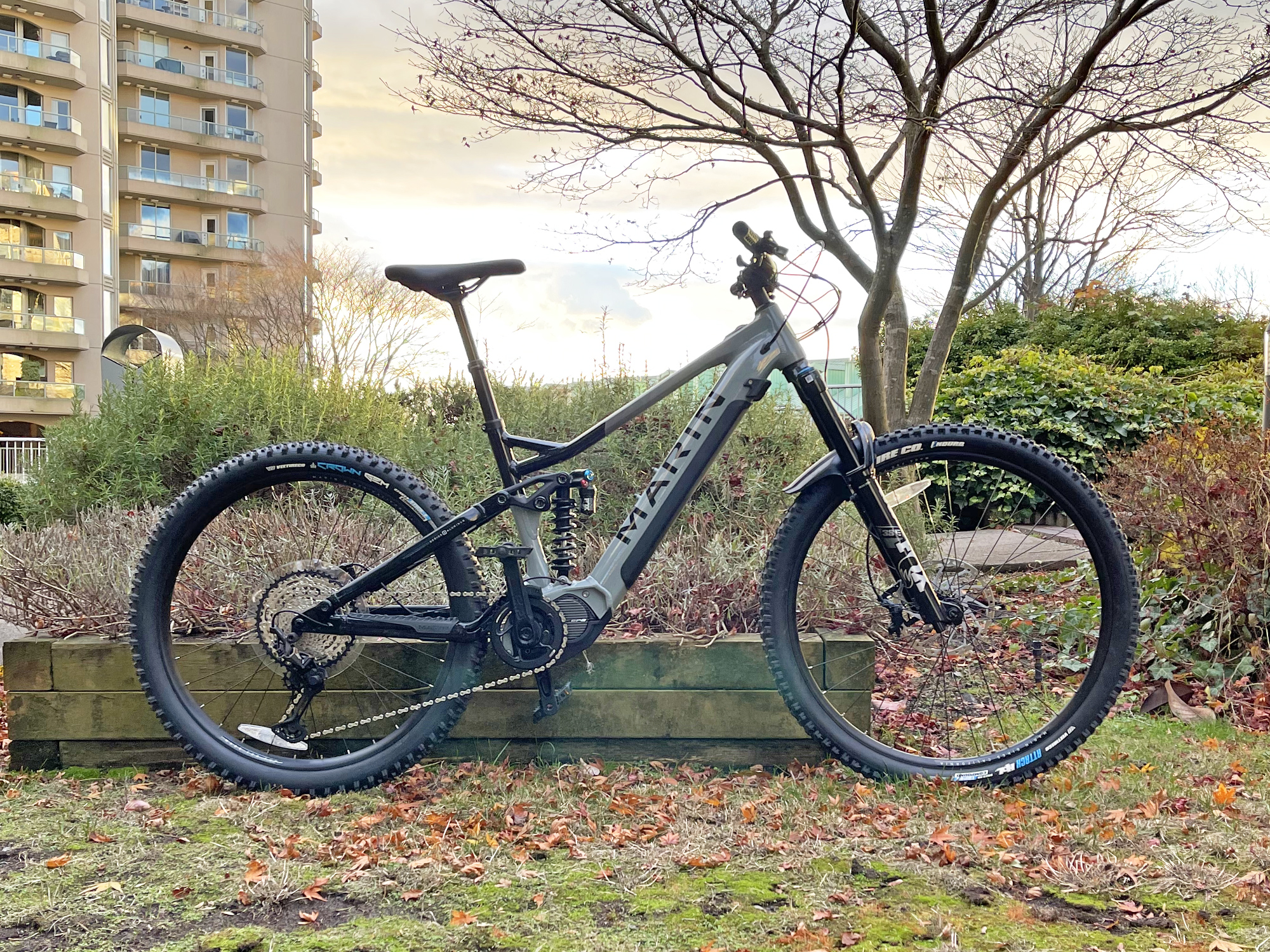
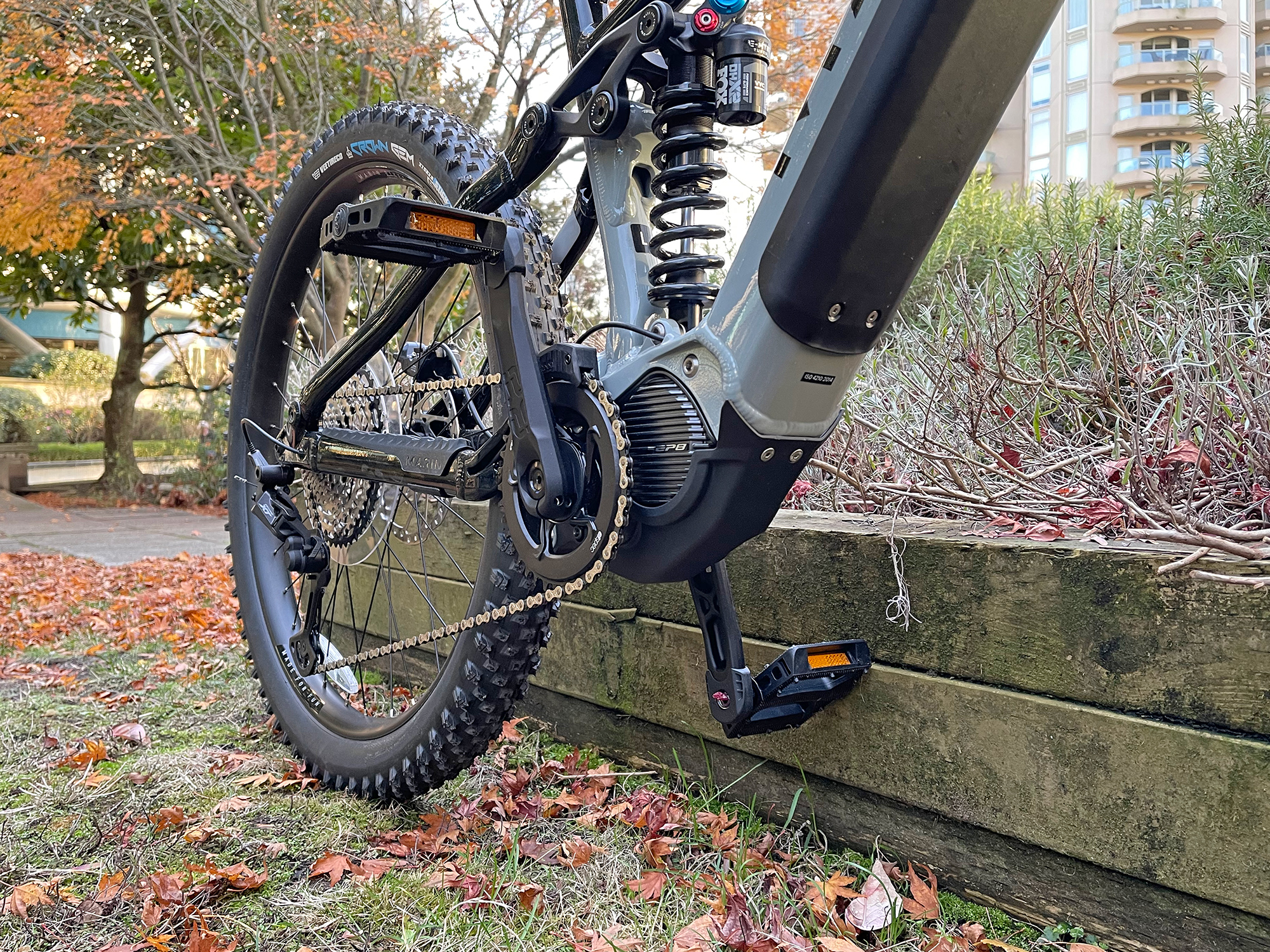
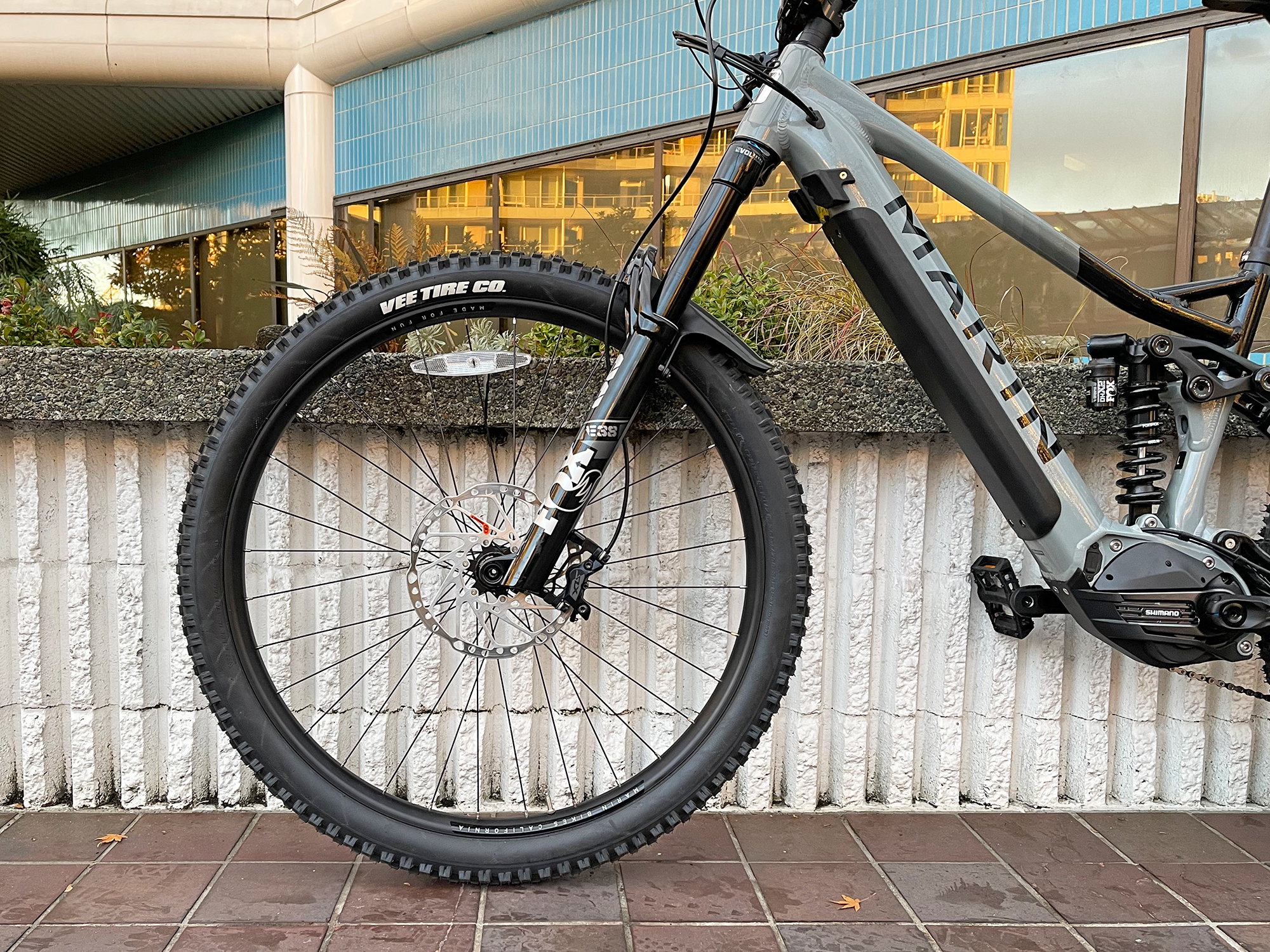
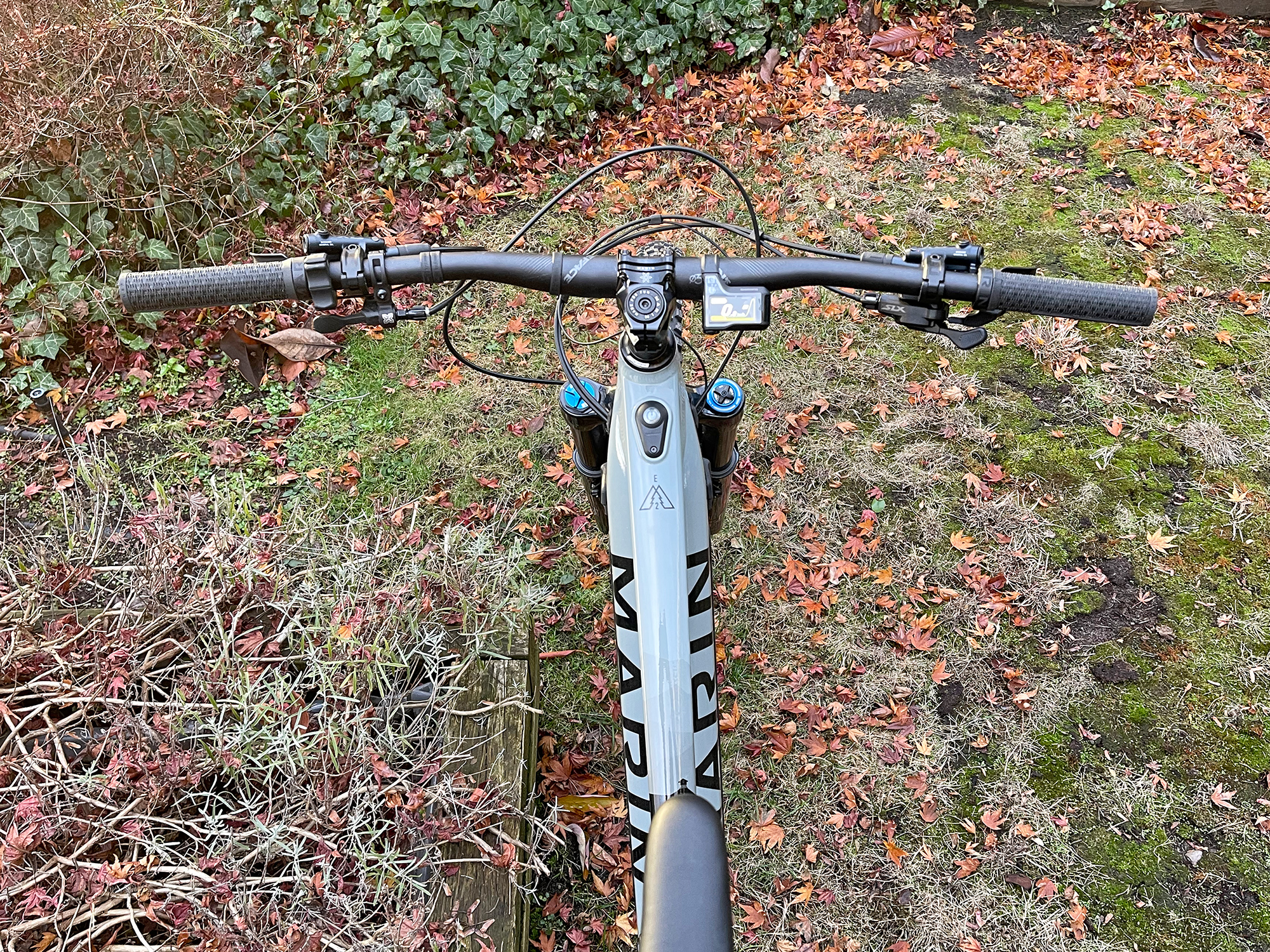
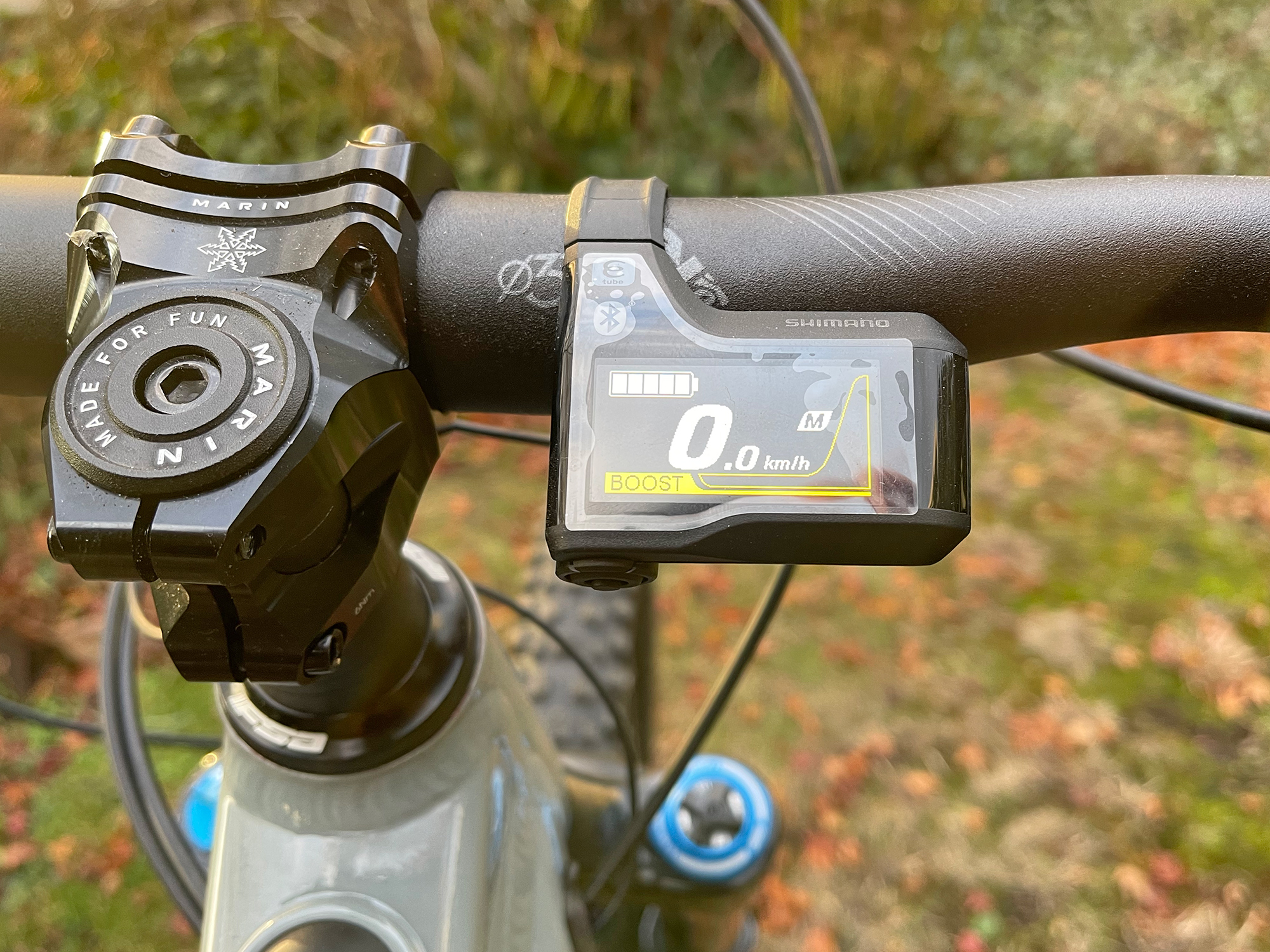
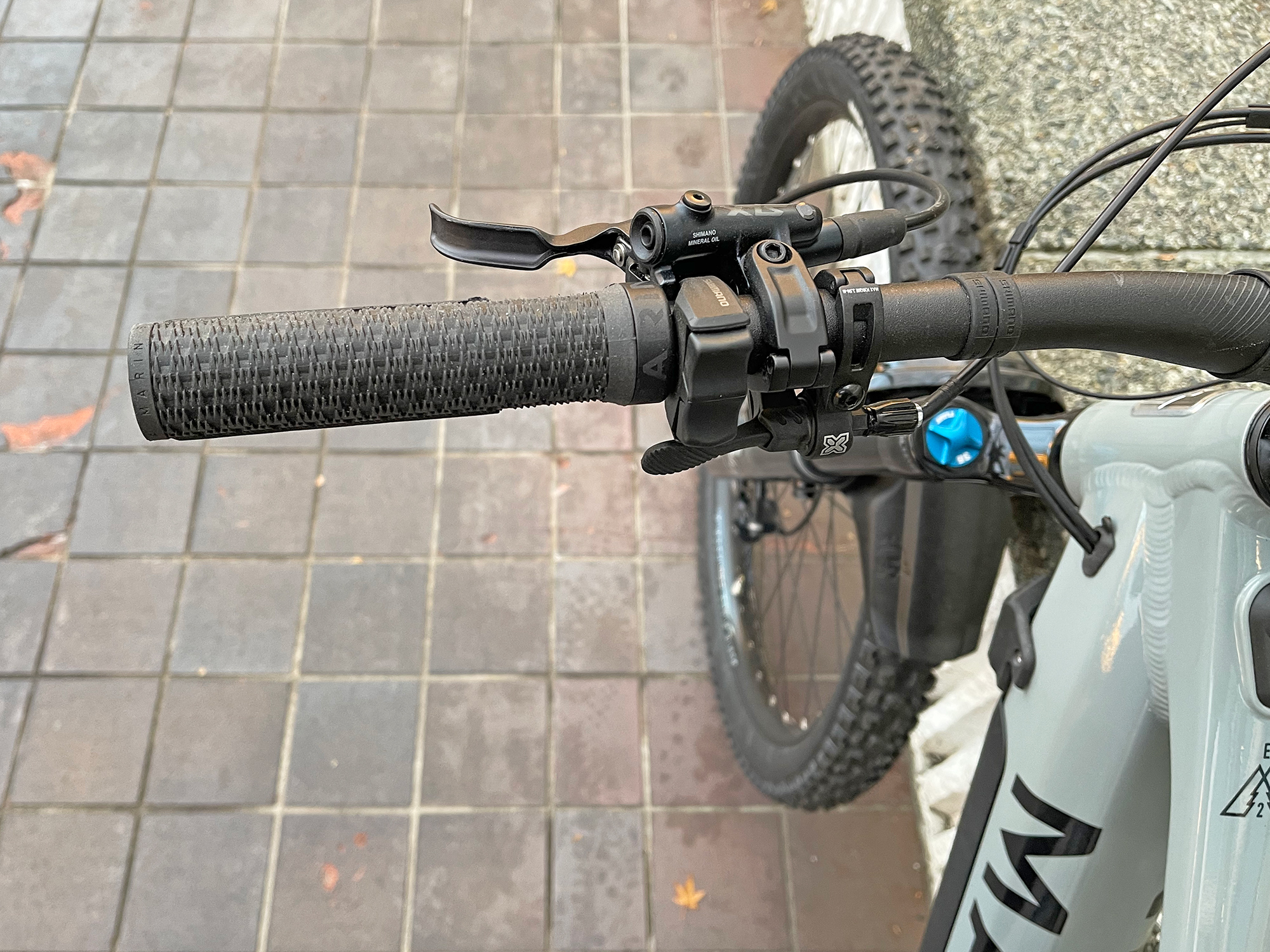
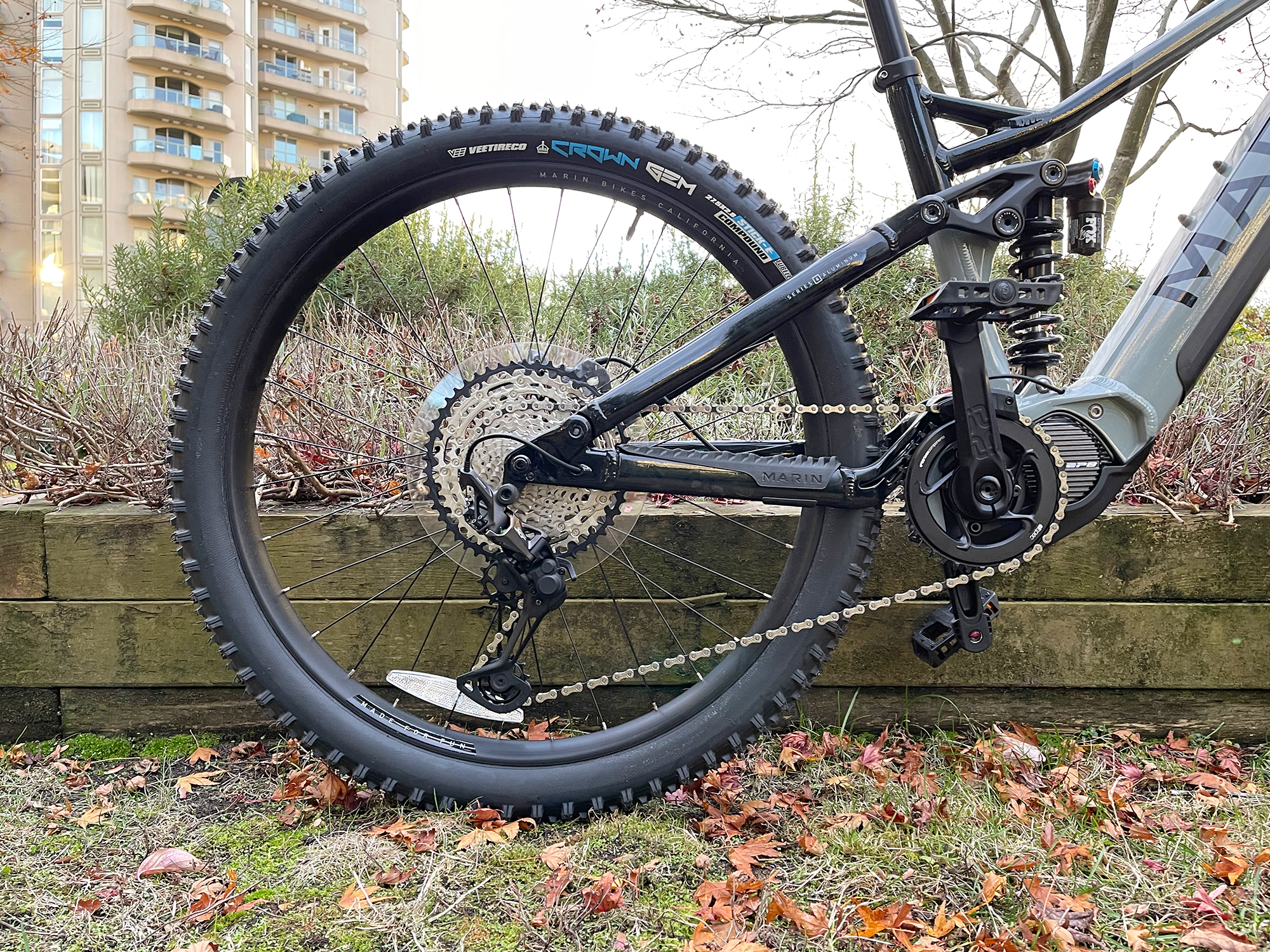
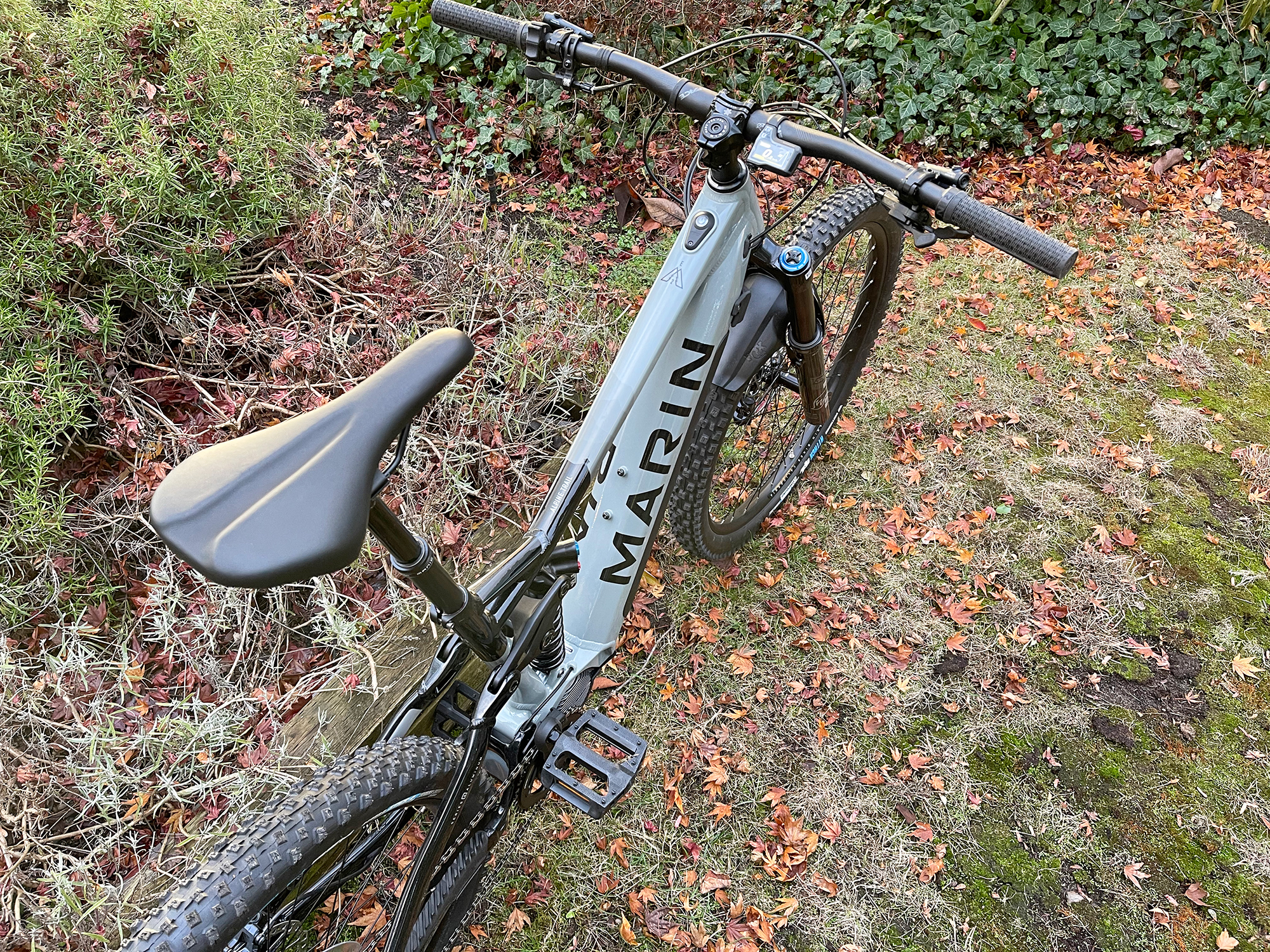
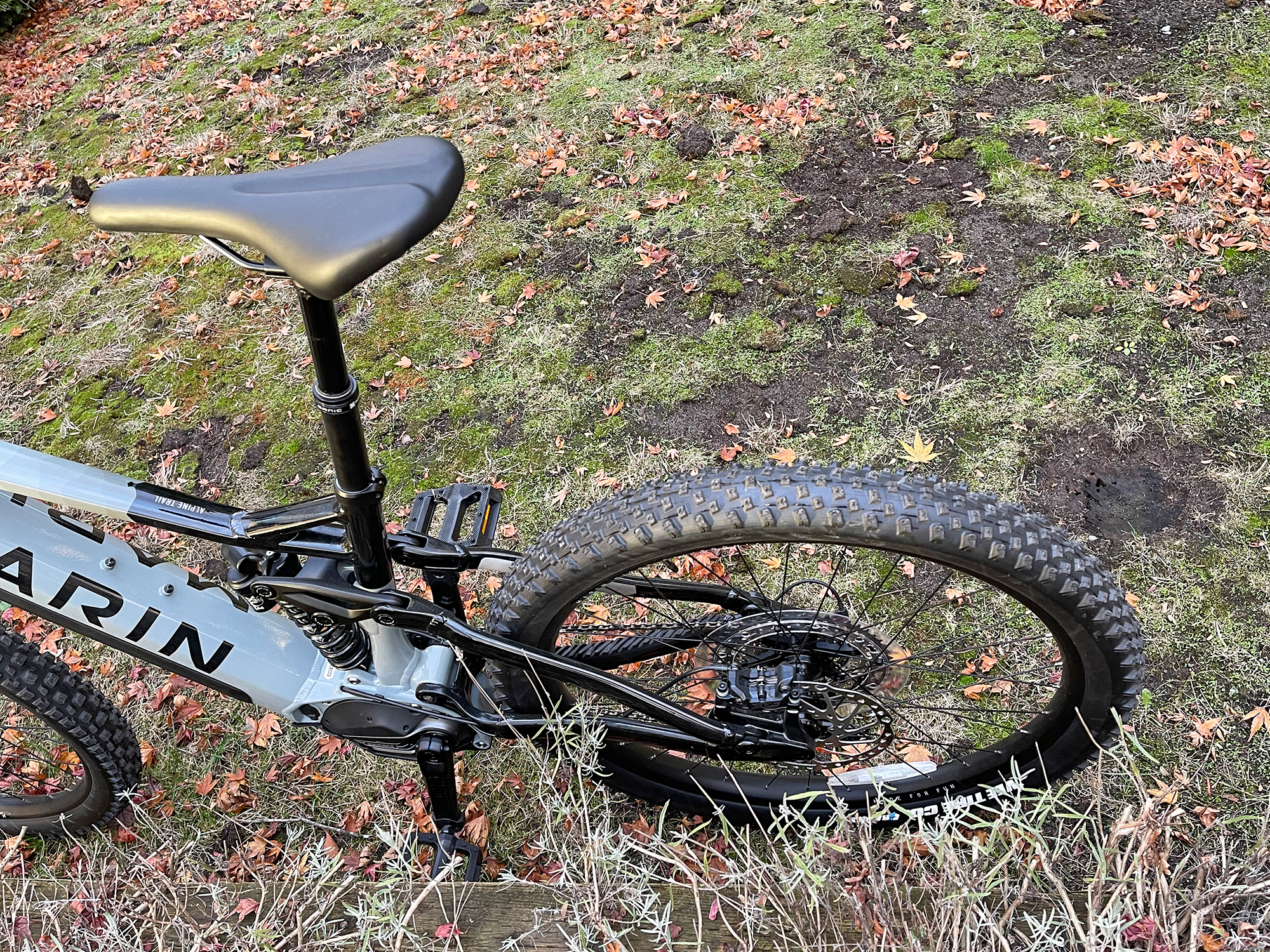
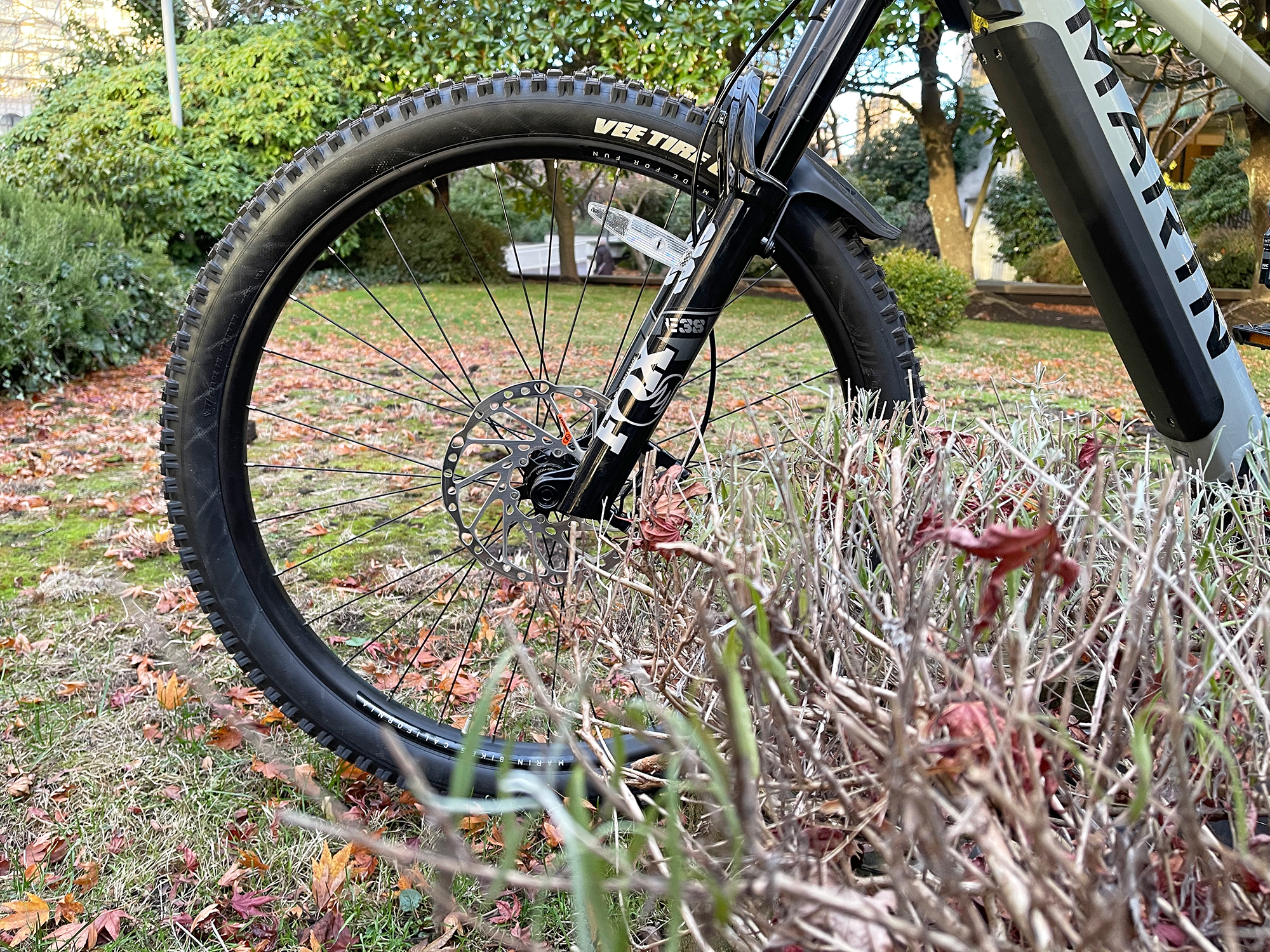
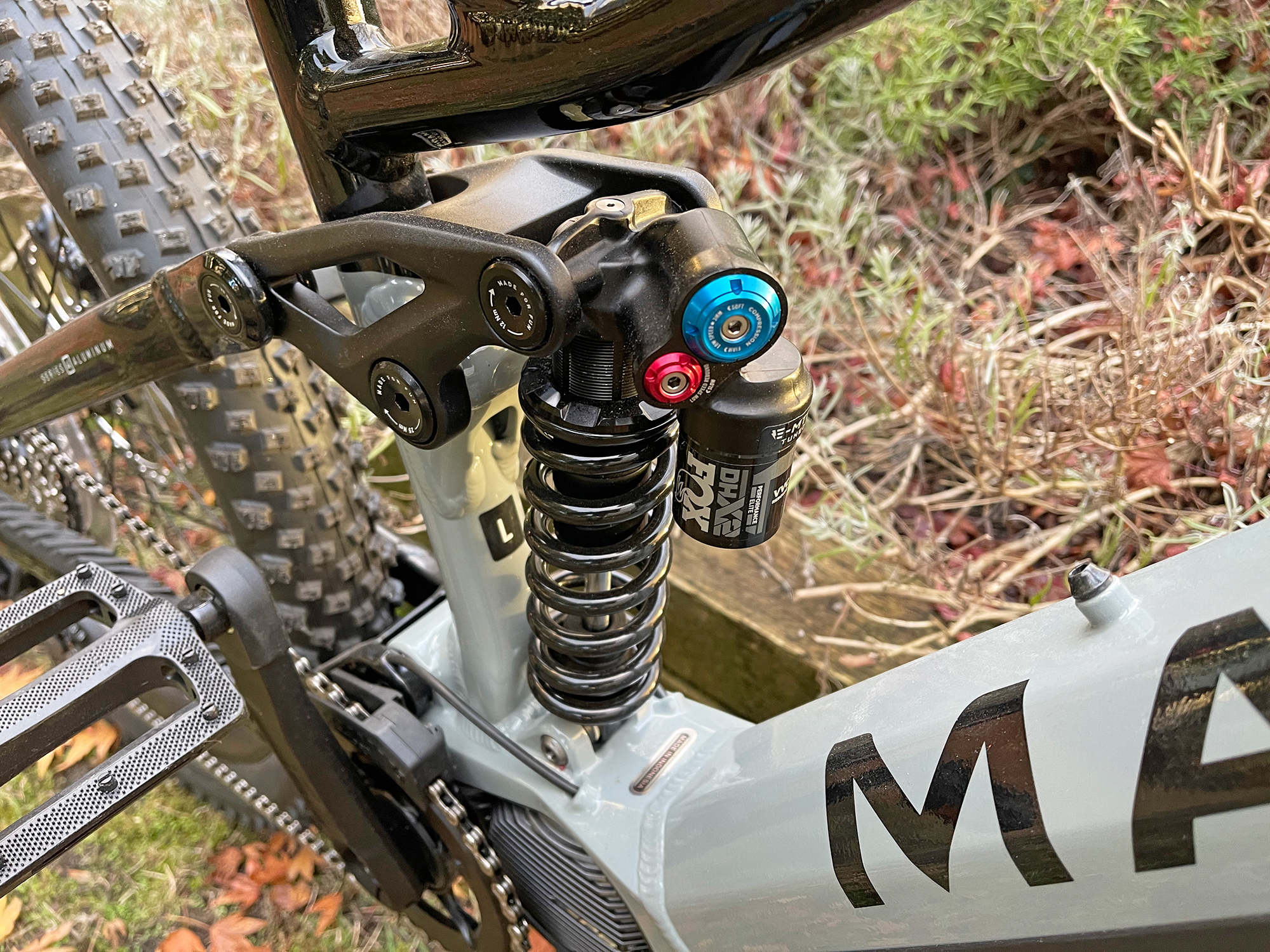
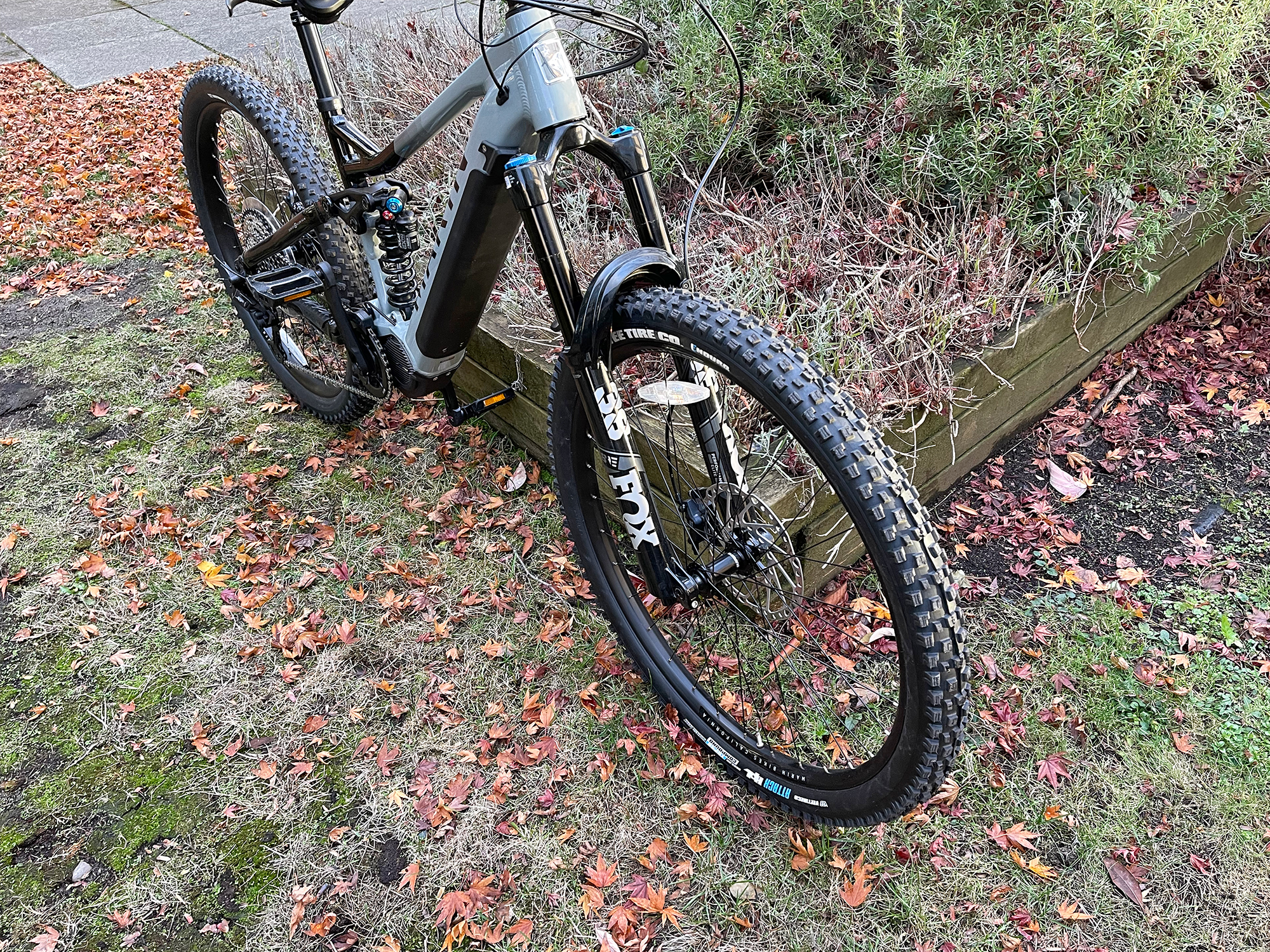
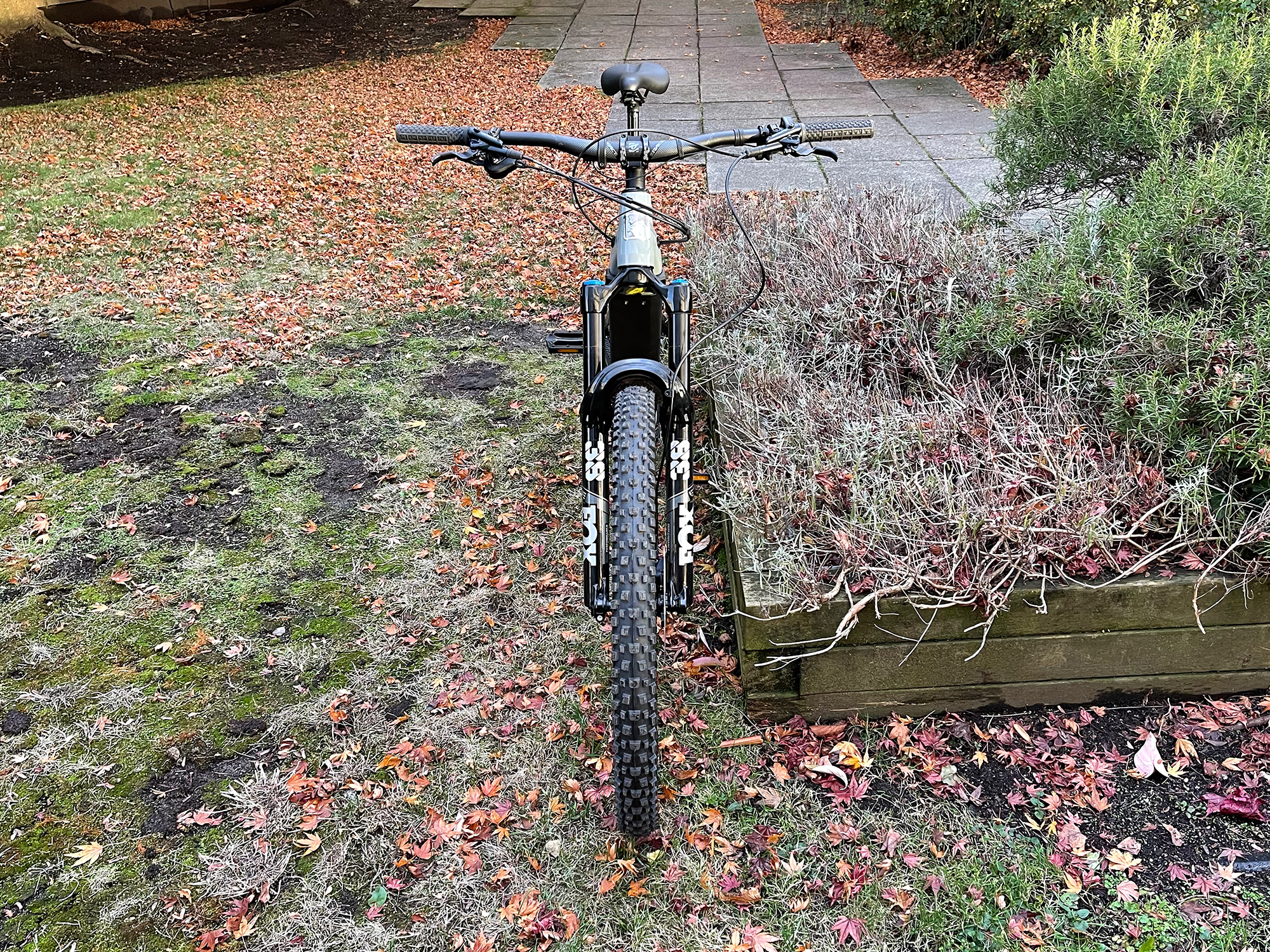
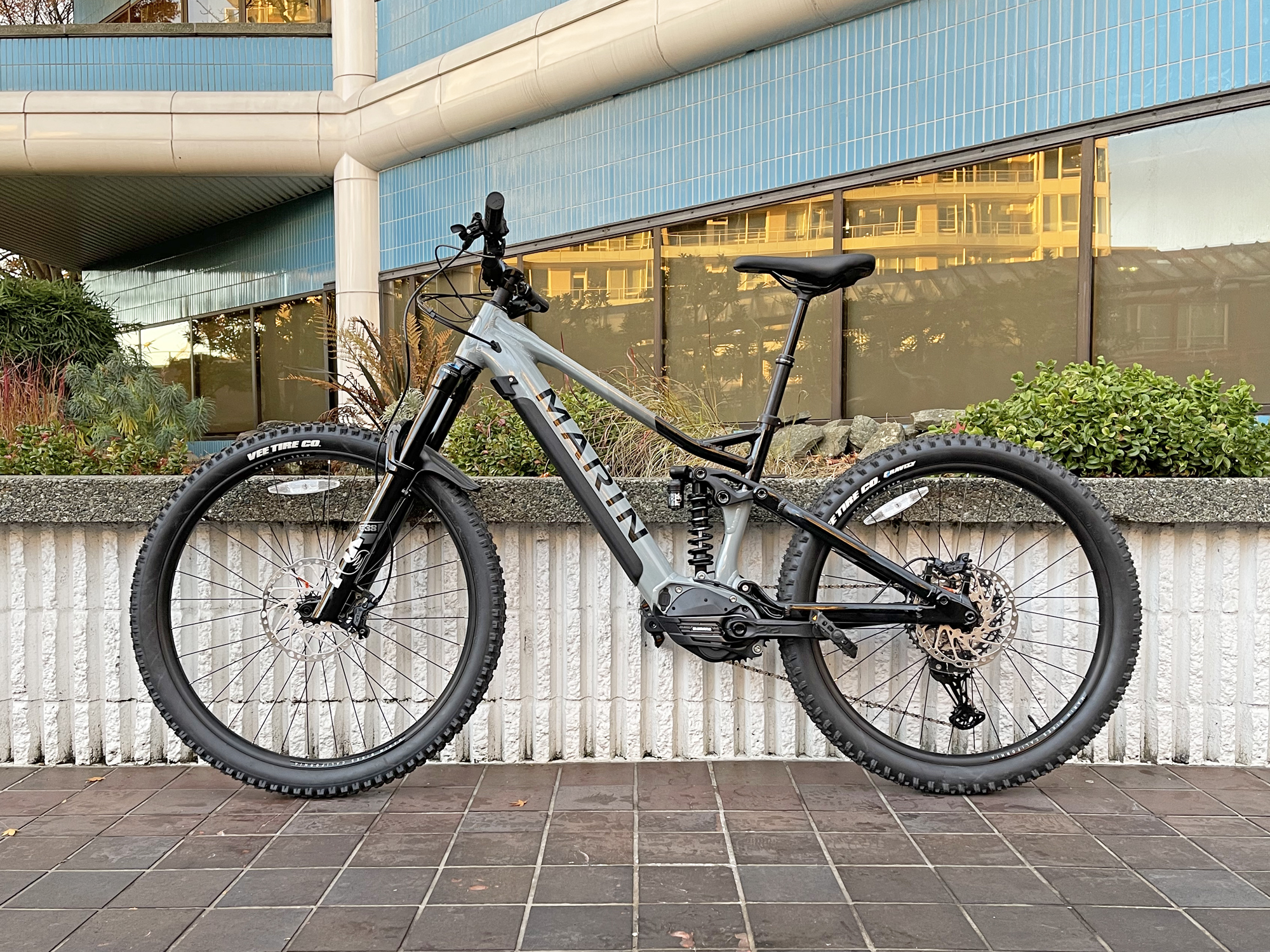
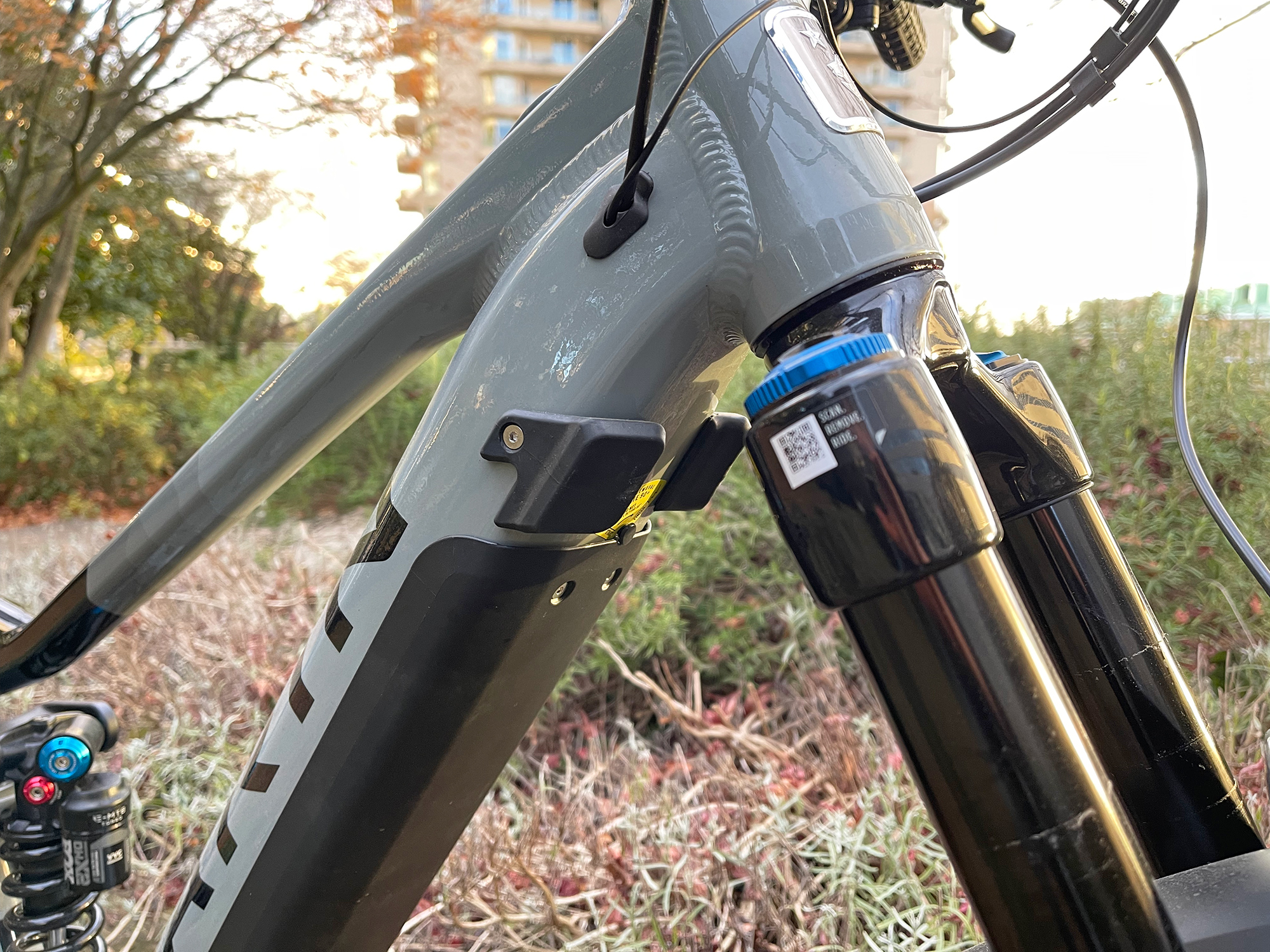
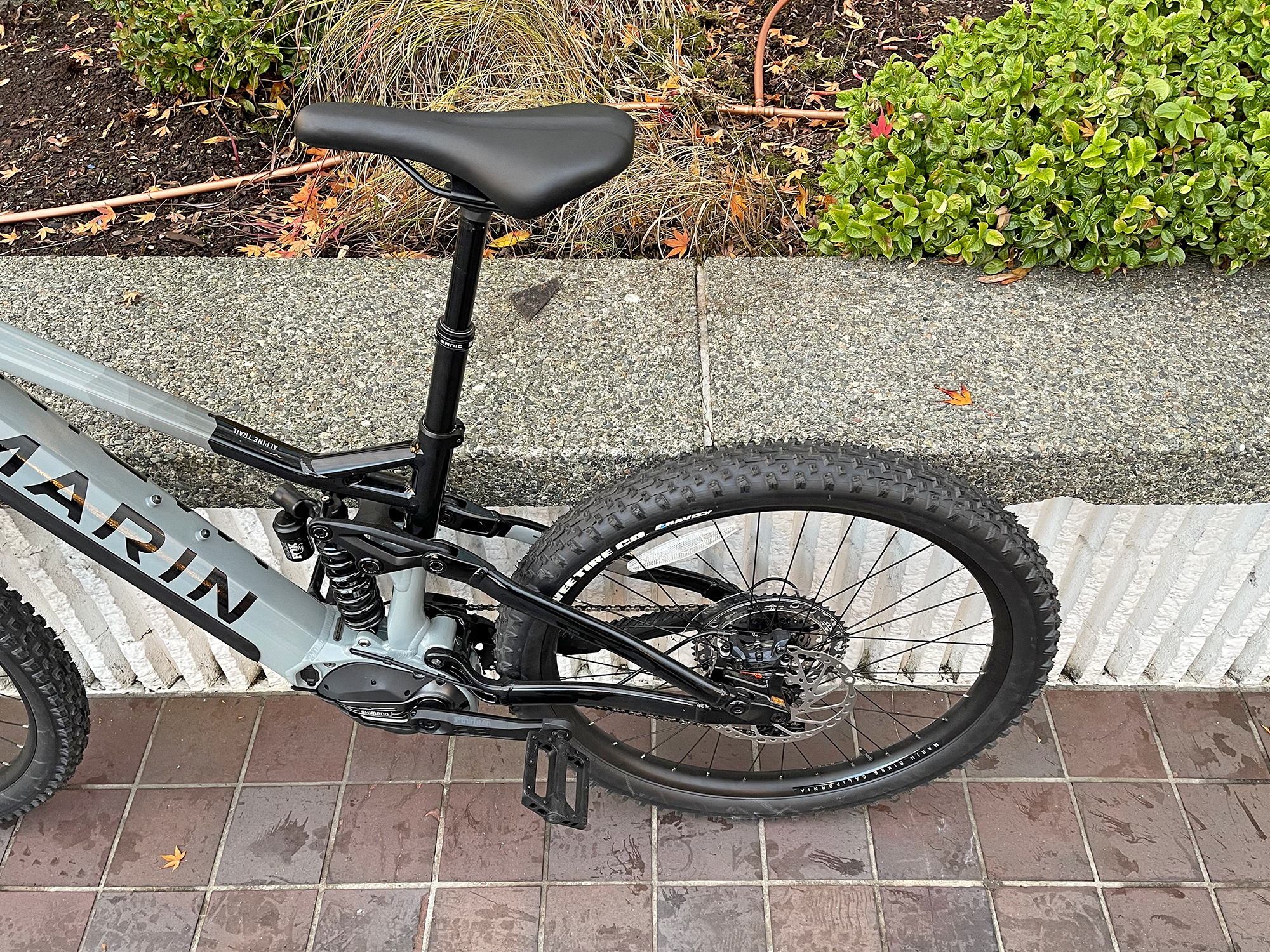
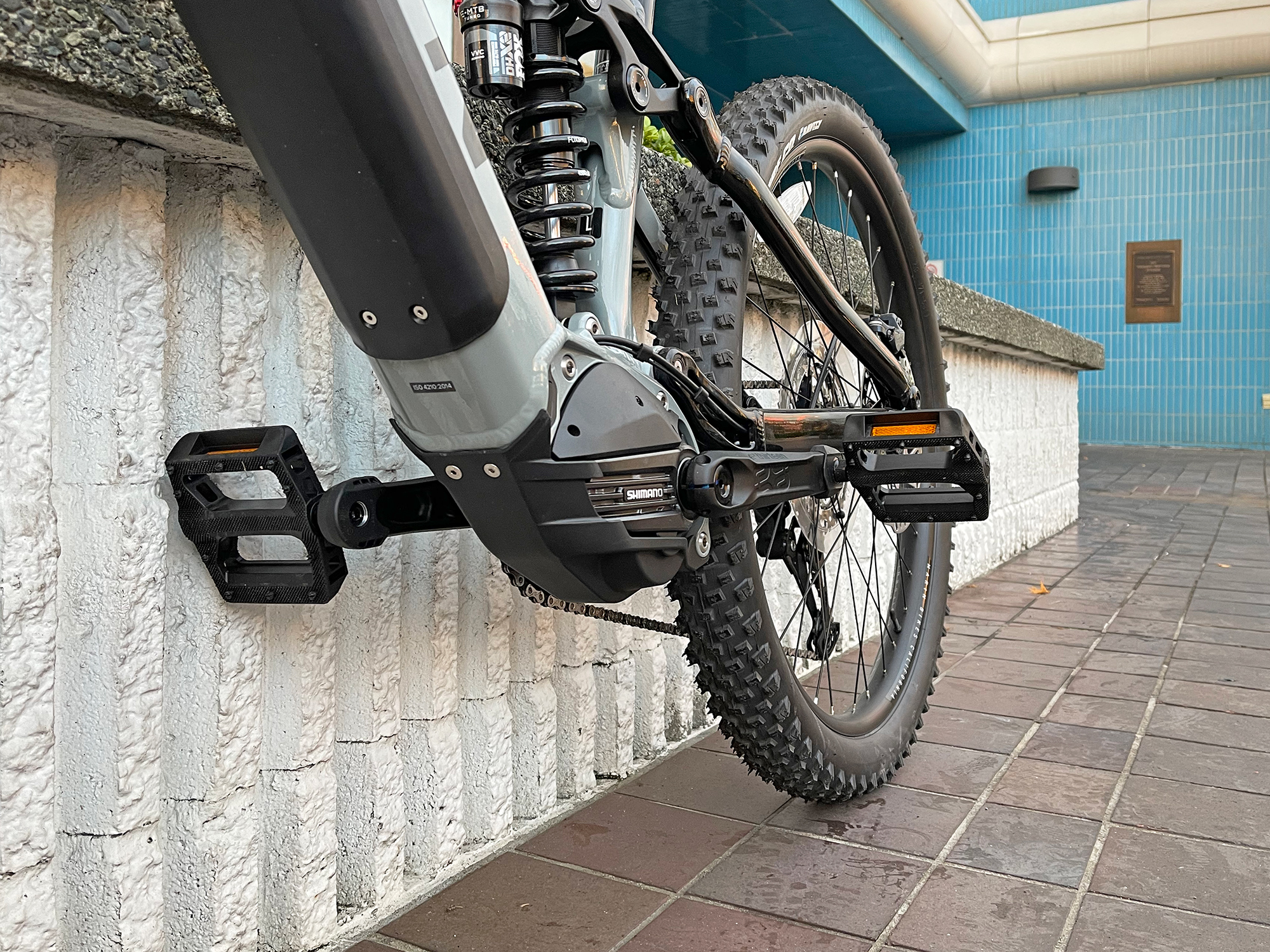
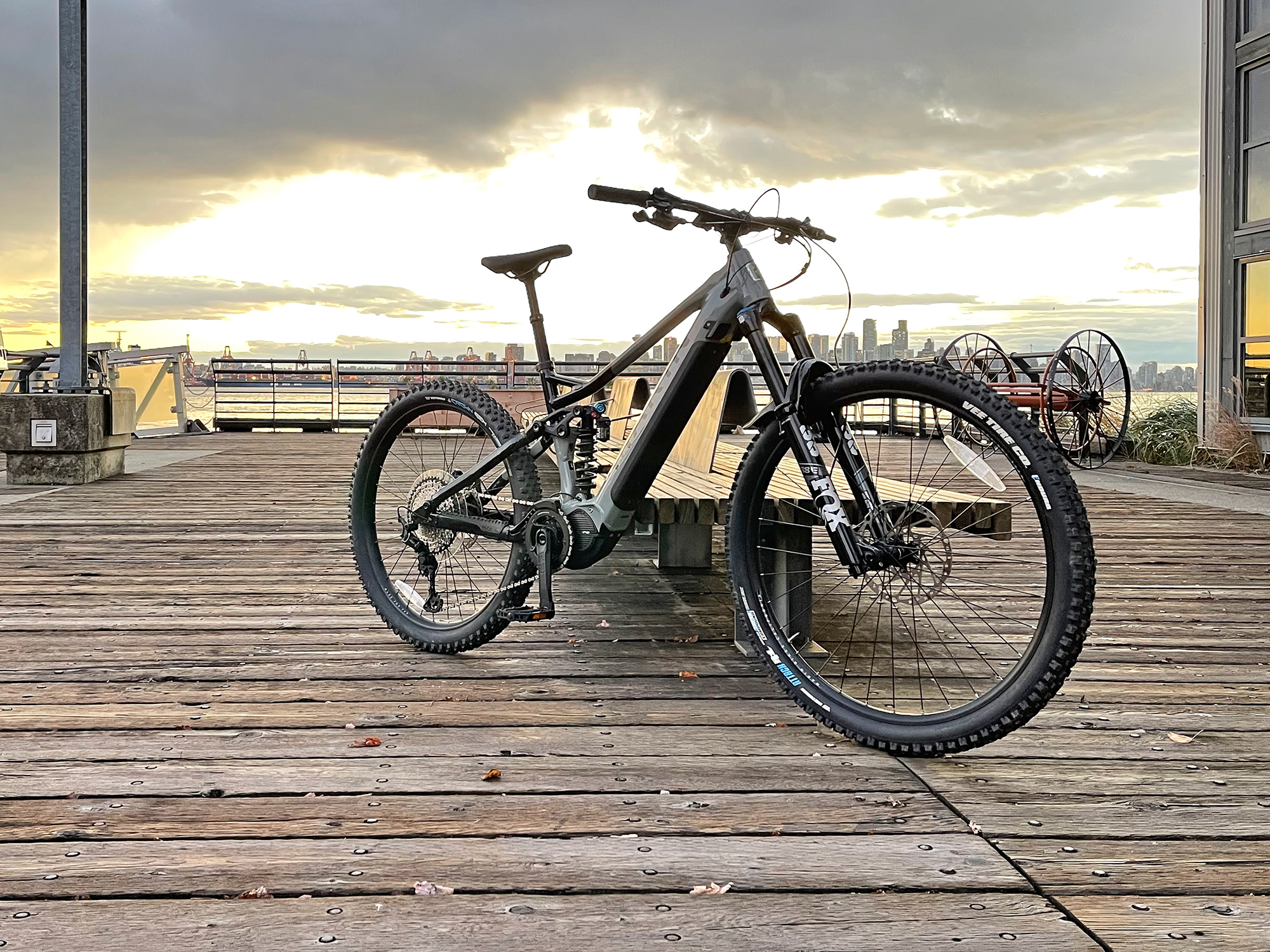
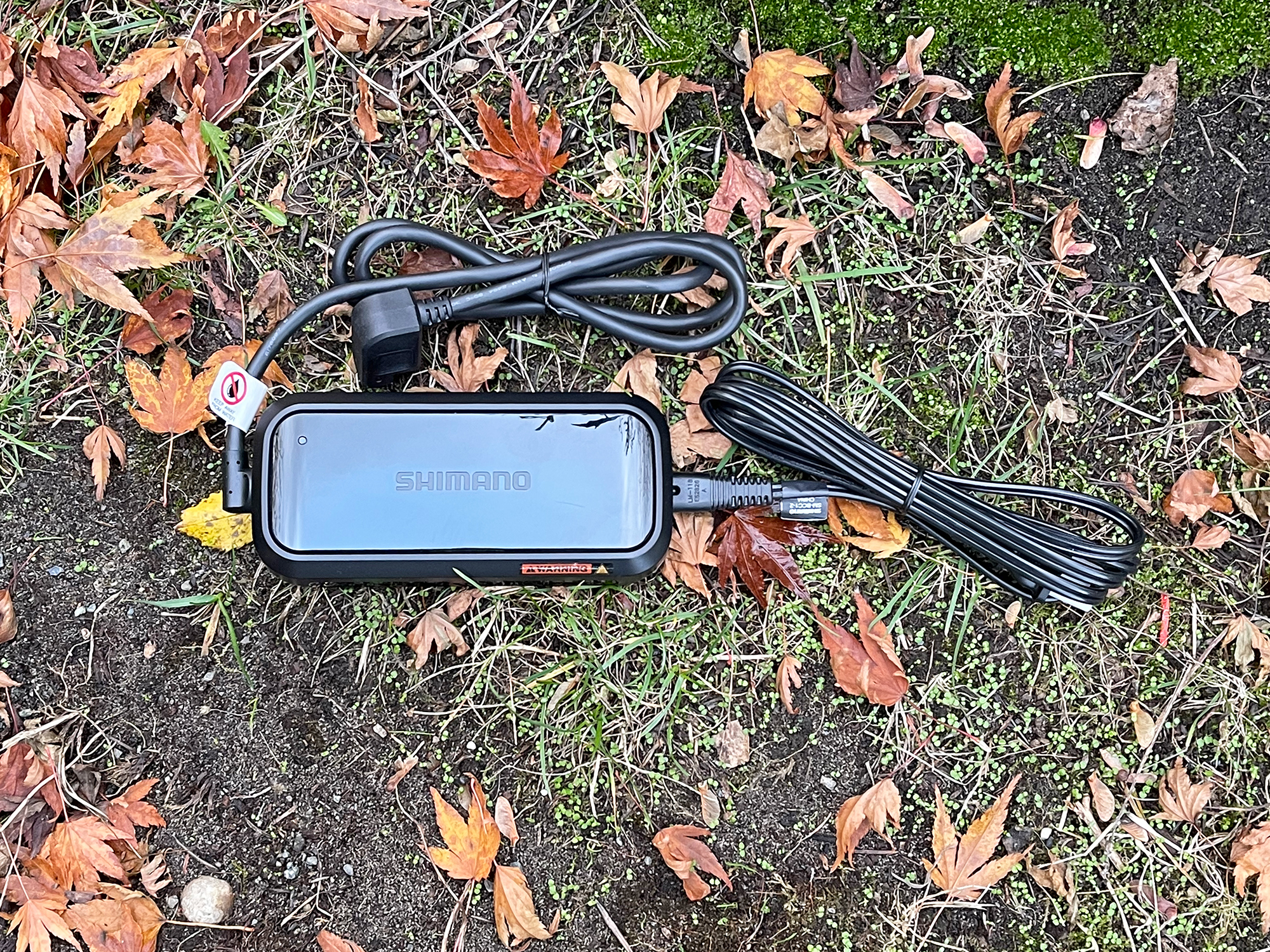
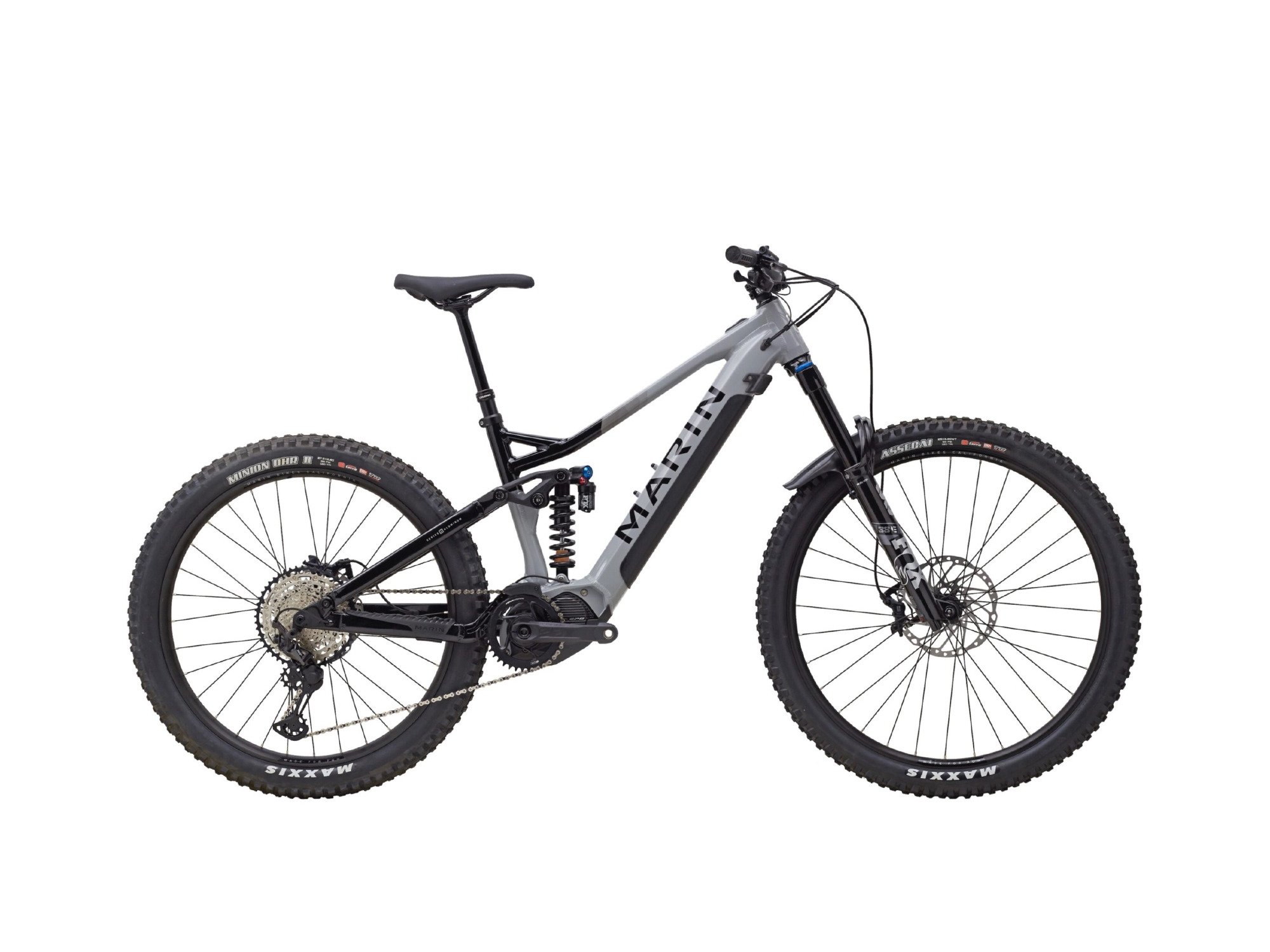

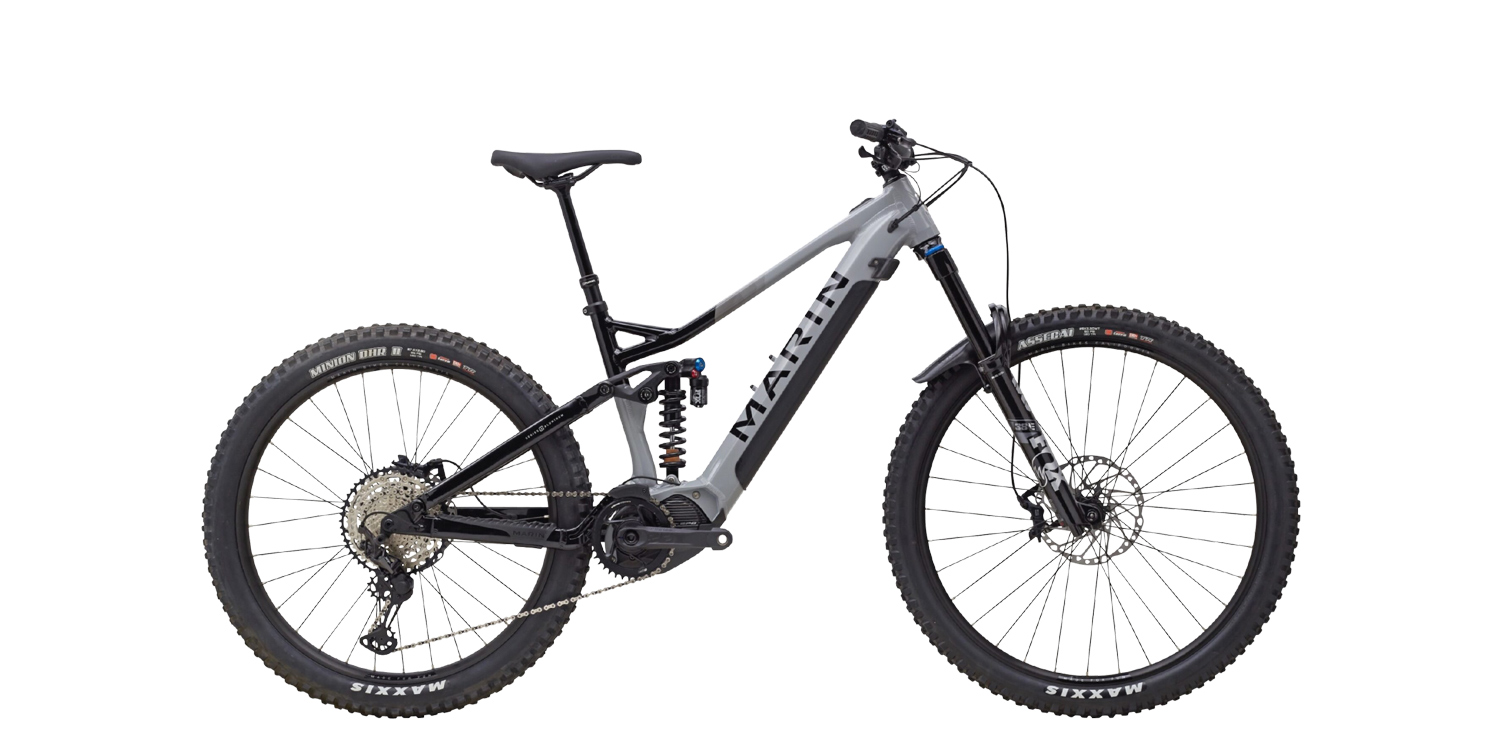
Reader Interactions